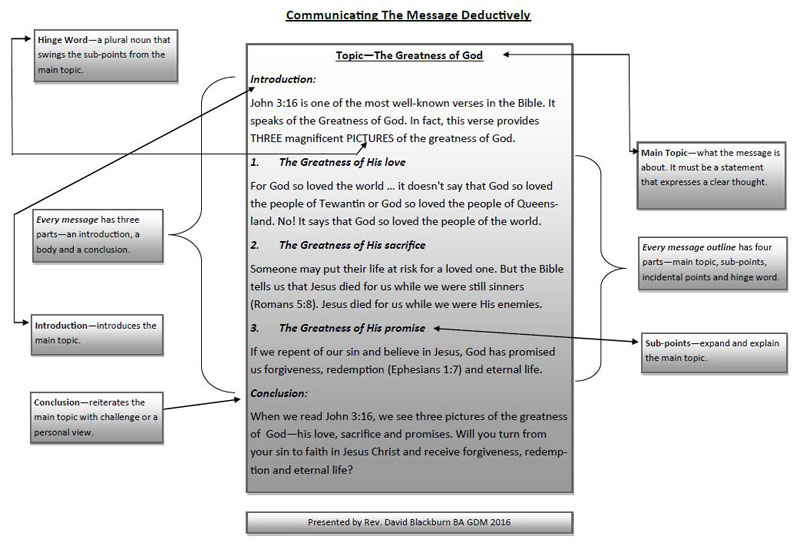How to write a deductive sermon? There are many ways to package a sermon in order to communicate the message of the Bible with the congregation. However, the deductive sermon model seems to be one of the easiest ways to preach a message to the congregation.

How To Write A Deductive Sermon
Let me explain how to write a deductive sermon by highlighting three important features of the sermon – the structure of the sermon, the sermon outline and the deductive sermon outline.
1. The Structure of the Sermon
How to write a deductive sermon? Before we even start to write a deductive sermon, we must understand the structure of a sermon.
The sermon structure has three parts: the introduction, the body of the sermon and the conclusion. The introduction introduces the main topic of the sermon. The body of the sermon expands and explains the main topic. The conclusion summarizes the main topic with a challenge or a personal view.
2. The Structure of the Sermon Outline
The body of the sermon is the sermon outline. To write a deductive sermon, you structure your sermon from a deductive perspective. For example, a deductive outline begins with the main topic of your message followed by the sub-points and incidental points.
If you were to write a succinct deductive outline of John 3:16, it would look something like this:
Topic: The Greatness of God.
Introduction:
John 3:16 is one of the most well-known verses in the Bible. It speaks of the Greatness of God. In fact, this verse provides THREE magnificent PICTURES of the greatness of God.
1. The Greatness of His Love
For God so loved the world … it doesn’t say that God so love the people of Tewantin or God so loved the people of Australia. No! It says that God so loved the people of the world. The greatness of God’s love!
2. The Greatness of His Sacrifice
Someone may put their life at risk for a loved one. But the Bible tells us that Jesus died for us while we were still sinners (Romans 5:8). Jesus died for us while we were his enemies.
3. The Greatness of His Promise
If we repent of our sin and believe in Jesus, God has promised us forgiveness, redemption (Ephesians 1:7) and eternal life.
Conclusion:
When we read John 3:16, we see three magnificent pictures of the greatness of God – his love, sacrifice and promises. Will you turn from sin to faith in Jesus Christ and receive forgiveness, redemption and eternal life.
3. The Structure of a Deductive Sermon Outline
How to write a deductive sermon outline? A deductive sermon outline has four parts. First, it has a main topic. The main topic needs to be a complete thought or idea. Second, it must have sub-points. Sub-points simply expand and explain the main topic. Third, sometimes you can have incidental points. Incidental points simply expand and explain the sub-points. Fourth, you will need a hinge word or key word. The hinge word or key word is a plural noun and it allows you to swing all your sub-points from your main topic.
Let me give you an example of the key word or hinge word from the sermon above! The first magnificent picture of the greatness of God is the greatness of His love. The second magnificent picture of the greatness of God is the greatness of His sacrifice. The third magnificent picture of the greatness of God is the greatness of His promises. This helps the preacher present the message in a progressive, logical and sequential manner. It has a natural flow to it and the listener should be able to follow the message quiet easily.
Once you have crafted the deductive sermon outline, you will need to add content to the deductive sermon outline with illustrations and applications. You will also need to write an introduction and a conclusion.
Reference Material
Braga James, 1981, How To Prepare Bible Messages, Multnomah Press, Portland, Oregon.
Chapell Bryan, 1994, Christ-Centered Preaching: Redeeming the Expository Sermon, Baker Book House, Grand Rapids, Michigan.
Koller W. Charles, 1995, How To Preach Without Notes, Baker Book House, Grand Rapids Michigan.